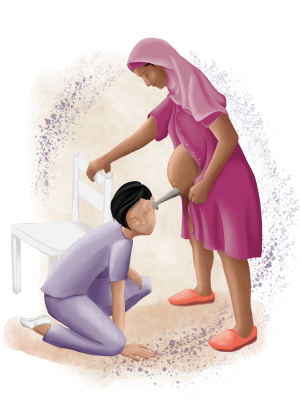About Listen2Baby
Why is Listen2Baby important?
For women who are at low risk of complications during labour and birth, UK guidance recommends that midwives monitor the baby's heart rate using a hand-held fetal stethoscope or ultrasound device.

This is known as 'intermittent auscultation' (IA), which means 'listening at regular intervals'. National guidance says that midwives should listen to the baby's heart rate straight after a contraction for at least one minute, and that they should do this and record the baby's heart rate every fifteen minutes during the first stage of labour, and every five minutes in the second (pushing) stage. Several national investigations have found issues with the way IA is carried out in practice that have contributed to death or severe injury in babies. Problems include IA not being carried out at the right time or often enough; the baby's heart rate not being recorded properly; and midwives not recognising or acting on concerns about the baby's heart rate.

There is no research evidence about the best way to do IA in practice, including what is the best device or counting method to use, and we don't know why IA is not always carried out in line with national guidance. Listen2Baby will provide high quality evidence in an area where there is almost none at present and where national enquiries have repeatedly recommended further research and quality improvement. It will also provide evidence more generally about how to support practice change and implement guidance in maternity care.

